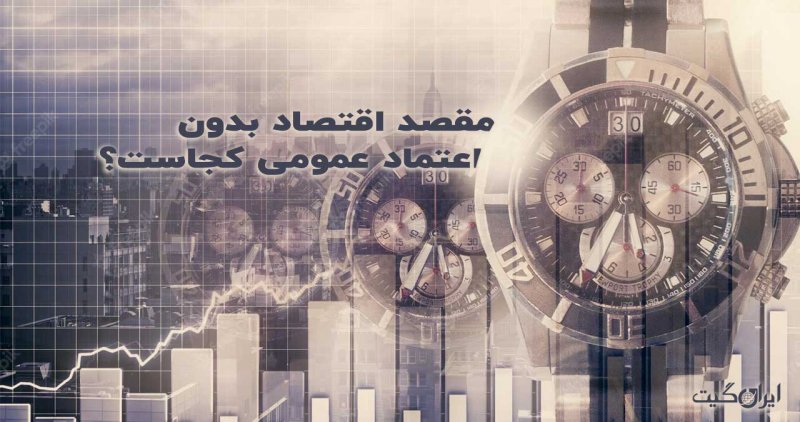Where is the Destination of an Economy Without Public Trust? Part Three
Where is the Destination of an Economy Without Public Trust? According to Iran Gate, for over two months, public protests by Iranian citizens against the policies of the Islamic Republic have been ongoing, and unlike most conservatives, there is no outlook for these protests to subside. But under such conditions and considering the characteristics of Iran’s economy, what destination can be envisioned for the country?
Iran Gate has examined the general state of Iran’s economy in a report that is the final part of a three-part series addressing Iran’s social and political conditions. The previous two parts dealt with the characteristics of Iran’s economy in recent decades and a foundational economic pathology of the country. The third part of this series aims to outline a perspective for the economy, considering the current state of the country.
Farewell to Public Trust
In recent weeks, numerous and sometimes contradictory analyses and reports about the current state of the country have been seen and heard in the media. However, almost all analysts, whether supporters, critics, or opponents of the Islamic Republic, agree on the point that Iran will not return to the days before September 16, 2022. This is an irreversible path with a natural destination: the loss of public trust, which, unlike past protests, there is little hope of restoring.
Economy Without Trust
It is under such conditions that economists believe centralized systems resort to directive policies to manage the economy. Iran’s economy, which has followed this pattern for at least the last five decades and has been under the complete control of governments, is now expected to be more subject to governmental decrees and directives than ever before.
The reason for this is the lack of public trust in government policies and even the statements of the country’s officials. Although a stronger tendency towards directive economic management does not solve the governance’s problems, it makes the situation more difficult than ever. However, it seems that governments similar to the Islamic Republic make similar decisions under similar conditions, but the result of all these decisions is the same.
But the missing link that peer governments of the Islamic Republic suffer from is public trust, which causes the country’s economy to be on the brink of collapse. Among the policies that the Iranian government has no choice but to implement these days is the adjustment of energy carrier prices. Gasoline prices have the highest priority in this regard, as a large portion of what is known as hidden subsidies is allocated to keeping the price of this energy carrier low.
However, the government of Ebrahim Raisi, due to the lack of social support and the weakening of public trust in the governance, cannot implement the plan to liberalize the prices of energy carriers. Naturally, the Raisi government is concerned about a price surge following the potential implementation of energy carrier price liberalization in the market. A surge that, if the society is not convinced, could certainly lead to a repeat of the events that occurred in November 2019. Although analysts believe that social developments and the extent of the weakening of people’s trust in the governance have intensified to such an extent that a reaction far more severe than three years ago should be expected.
What is the Main Problem of the System: Economic Bankruptcy or Street Protests?
As mentioned earlier, the thirteenth government is currently engaged in finding a way to end the protests that began more than two months ago, and it seems there is no outlook for what is called ‘settling down’ in the government’s discourse. However, some analysts believe that the main concern of the Islamic Republic is not the events on the streets but rather the issue relates to the turbulent rooms of the Program and Budget Organization.
According to this group of experts, the main problem of the Islamic Republic is the rapid pace of the country’s economy towards collapse or economic bankruptcy. An event that, if it occurs, could certainly lead to the addition of a new and much larger wave of protests in the streets across the country.
Although with the passing of time since the tragic death of Mahsa Amini in the custody of Tehran’s morality police, murmurs of protests with economic origins are also being heard. The biggest sign was the three-day nationwide strike in the second half of November 2022, which, contrary to expectations, was accompanied by market convergence in most cities of the country. However, the market remains in a state of uncertainty and has not been convinced to express a unified reaction.
But it seems that if conditions continue in this manner and the budget season also indicates that the government’s resources for 2022 are more limited than in previous years, the market will certainly reconsider its positions.
Meanwhile, the labor strikes in the country’s oil and petrochemical industries should not be overlooked, which have caused the stocks of the mentioned companies to plummet on the Tehran Stock Exchange. On the other hand, there are murmurs of changes in the management of refineries and petrochemical companies in the south of the country.
Iran Gate’s follow-ups also show that managerial position changes in the country’s industrial complexes are due to the continuation of labor strikes in the oil industry. Another worrying point for the thirteenth government is the announcement of a truck drivers’ strike across the country, which seems to be forming with professional goals and protesting against low wages.
- Iran’s Economy is Bankrupt: Part Two
- No Hope for the Future of Iran’s Economy: Part One

